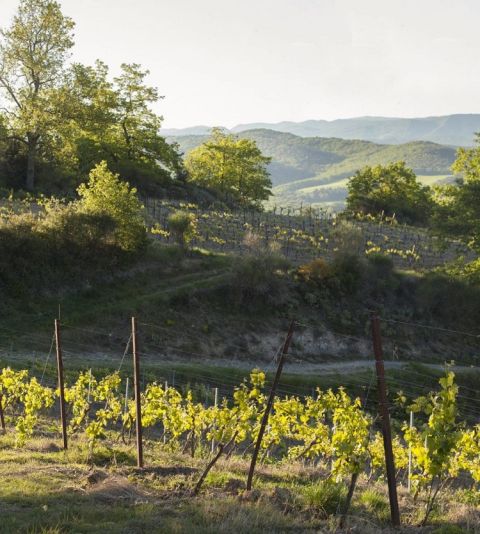From €10.80, £10.95, CA$19, 2,420 Japanese yen, 155 Brazilian reais
Françoise Antech is a fierce spirit. She’s the sixth generation to run this winery that specialises in the traditional sparkling wines of the region, following in the footsteps of four women who were instrumental in starting the winery and keeping it going. Her father and uncle were the first men to run it and have apparently not had an argument in 50 years of working together. They are still involved in helping Françoise, who has been running the company for 25 years.
She doesn’t just make wine. She is actively involved in a number of social and cultural causes, supporting students, jobless people, music festivals and artists. She is also passionate about fighting for the survival of the purely Occitan grape, Mauzac. Her energy crackles and she has a great sense of humour. You’d want her on your side if you were marching on Parliament. She makes things happen.
But it’s her wine I want to talk about.
She makes the three styles of sparkling wine from Limoux, Crémant de Limoux, Blanquette de Limoux and Blanquette Méthode Ancestrale, as well as a still Chardonnay. I recently tasted four of her sparkling wines, and the Réserve Brut Blanquette de Limoux just leapt into my arms and said, ‘Drink me!’
Blanquette de Limoux has an interesting history and it’s thanks to Caryl Panman’s painstaking research in response to my incessant questions that I can tell you that almost 10% of Thomas Jefferson’s wine cellar at Monticello was Blanquette de Limoux. ‘Blanquette’, she tells me, ‘is the traditional name for the Mauzac grape; it means "little white one" because of a light downy layer that forms at certain times of the year on the underside of the leaf’. In 1938 it became the first AOC in the Languedoc, although local legend claims that sparkling Blanquette de Limoux was being made by the monks of St-Hilaire back in 1531 (long before champagne …). Today there are 22 producers making Blanquette de Limoux.
The Antech Réserve Brut is a blend of 90% Mauzac, 5% Chardonnay and 5% Chenin from 20- to 40-year-old vines grown on clay-limestone hillside terraces and slopes buffeted by marine winds. (Antech is not organic, although the vineyards are certified by Terra Vitis and Françoise has planted almond, fruit and cypress trees to offset travel carbon.) The grapes are hand-picked, pressed immediately in a pneumatic press and then fermented in temperature-controlled stainless steel. Secondary fermentation is in bottle and the wine ages on lees for 18 months. Dosage is 8–10 g/l and it clocks in at 12% abv.
It has quince perfume with a touch of coconut. It pulls you closer in and surprises with its unexpected depth and richness for a Blanquette de Limoux. It actually made me laugh with delight, and I wrote: ‘This is rather gorgeous. It curves, light as a feather, round the tongue and purrs like a cat. Crisp green apples, candied lemon peel and a dab of sherbet sparkle bright as crystal over a base of sugared almonds. Don't even begin to compare this with champagne or any traditional sparkling wine – it's in a different category altogether and needs to be judged as such. This is quite a special Blanquette.’
It’s not bone dry, but the balance is pitch perfect. It’s delicate enough to have for lunch or afternoon tea. It begs to be drunk outside, at a table laden with summer tomato salad and bowls of fresh peaches and charcuterie, the sound of bees buzzing busily nearby.
And it is extraordinarily good value! Françoise sells it for €9.30 at the cellar door and you can order it for €10.80 a bottle from Languedoc Wineshop (who deliver to the UK free if you order a case of 12 bottles; they deliver all over Europe). The Wine Society stocks it at £10.95, and you can get it in Alberta, Canada for CA$19. Baron Francois (New York City) import and distribute it in the US. You can also find it in France, Germany, the Netherlands, the Czech Republic, Austria, Italy, Ireland, Brazil and Japan. Antech supply the house fizz for St John, Quality Chop House, Clipstone and Portland restaurants in London.
NB This is a single-vintage sparkling and I tasted the 2017, which has just been released and will be on the shelves soon (if not already), but I have not specified a vintage because Wine-Searcher has several listings under NV. Most stockists will have the 2016 or 2017 and, having tasted both, I can assure you they are equally good. I wouldn’t bother ageing it (although it will happily last in the cellar for a couple of years) – it’s so ready to drink and so lovely right now. A case of this would see you through 2020 summer barbecues.


















